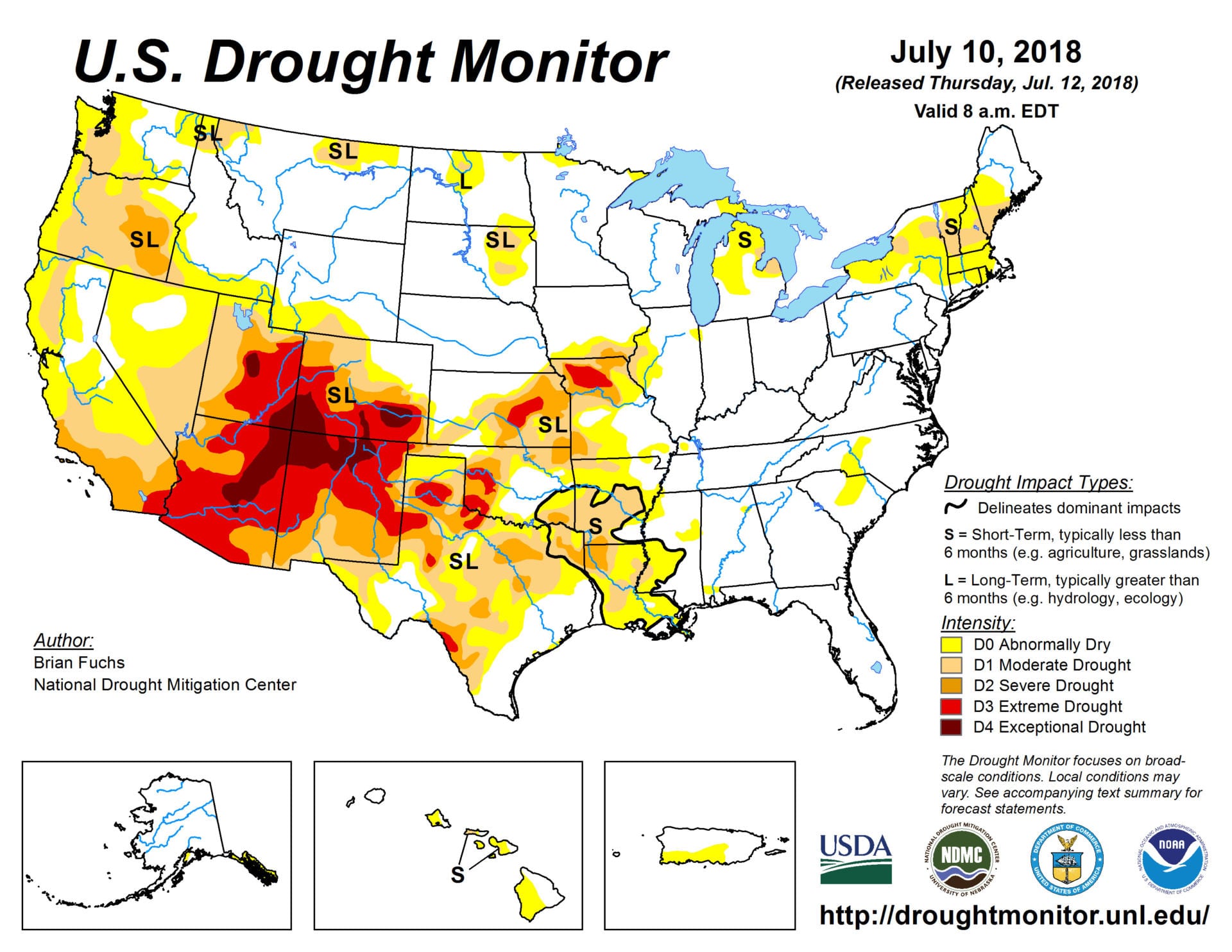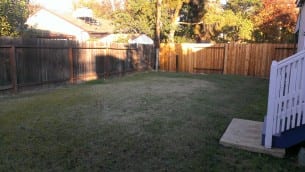by Jessa Kay Cruz
This 2015 Xerces Society article is reprinted with permission.
If you live anywhere in the western United States, you are probably feeling the effects of the ongoing drought. The National Drought Mitigation Center reports that 11 western states are currently in a state of severe or extreme long-term drought. California is in its fourth year of severe drought, with January 2015 as the driest January on record.
 As we look for ways to save water in our communities, outdoor water use in residential areas has come under increasing scrutiny. An average suburban homeowner can apply over 10,000 gallons of water to their lawn annually, and can easily use 500 gallons in a single irrigation, making lawns the single greatest use of water by most families. You can calculate your lawn water use and cost here. In fact, outdoor use can exceed all other uses of water in residential homes for the entire year! To curb water use, watering restrictions have been mandated during the summer months in many neighborhoods and cities in the West, reducing those once-emerald green expanses into sad patches of prickly-brown desolation.
As we look for ways to save water in our communities, outdoor water use in residential areas has come under increasing scrutiny. An average suburban homeowner can apply over 10,000 gallons of water to their lawn annually, and can easily use 500 gallons in a single irrigation, making lawns the single greatest use of water by most families. You can calculate your lawn water use and cost here. In fact, outdoor use can exceed all other uses of water in residential homes for the entire year! To curb water use, watering restrictions have been mandated during the summer months in many neighborhoods and cities in the West, reducing those once-emerald green expanses into sad patches of prickly-brown desolation.
Not only do lawns consume copious amount of water, they also provide next to nothing in the way of habitat for local fauna, pollinators included. Lawn grass provides neither pollen nor nectar nor nesting materials for most pollinators. The good news is, there couldn’t be a better time to tear out your lawn and replace that ugly patch with a beautiful, drought-tolerant pollinator garden! Many western cities have initiated programs that offer significant financial incentives for homeowners to remove those thirsty lawns and replace them with drought tolerant landscaping. This type of landscaping can reduce outdoor water use by as much as 90%. Replacing your lawn provides an excellent opportunity to not only conserve water, but create some valuable pollinator habitat as well.
Precisely which plants to use depends on where you are, but as a general rule, we recommend using flowering plants that are native to your region. Most plants native to the western United States are acclimated to warm, dry summers and need very little supplemental irrigation once established. Because pollinators require pollen and nectar throughout their lifecycle, you will want to select plants with a variety of different bloom times, from early in the spring all the way into the fall. Not only will this provide a consistent source of pollen and nectar for our beloved pollinators, but it will also give your eyes a feast throughout the seasons. There is nothing quite as beautiful as a yard full of flowers, and nothing quite as rewarding as saving our precious water and our precious pollinators at the same time.
For more information on pollinator plant selection, please see our plant lists.


Photos of lawn before pollinator garden installation (above) and after (below).


About the Author
Jessa Kay Cruz is a Senior Pollinator Conservation Specialist for the Xerces Society. She is based in California, where she works with growers to incorporate habitat into their farms and orchards.
***
Each author appearing herein retains original copyright. Right to reproduce or disseminate all material herein, including to Columbia University Library’s CAUSEWAY Project, is otherwise reserved by ELA. Please contact ELA for permission to reprint.
Mention of products is not intended to constitute endorsement. Opinions expressed in this newsletter article do not necessarily represent those of ELA’s directors, staff, or members.

